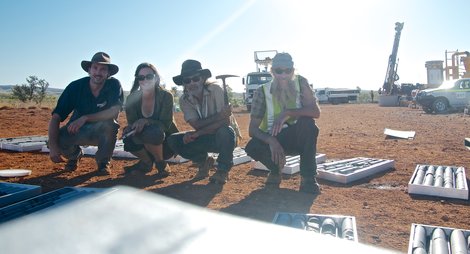- Paleo-Biogeochemistry
- Expeditions
- Ultra-clean Archean drilling (AIDP)
Ultra-clean Archean drilling (AIDP)
Reappraisal of hydrocarbon biomarkers in Archean rocks (PNAS)
Drilling deep into Earth's history (Max Planck Research)
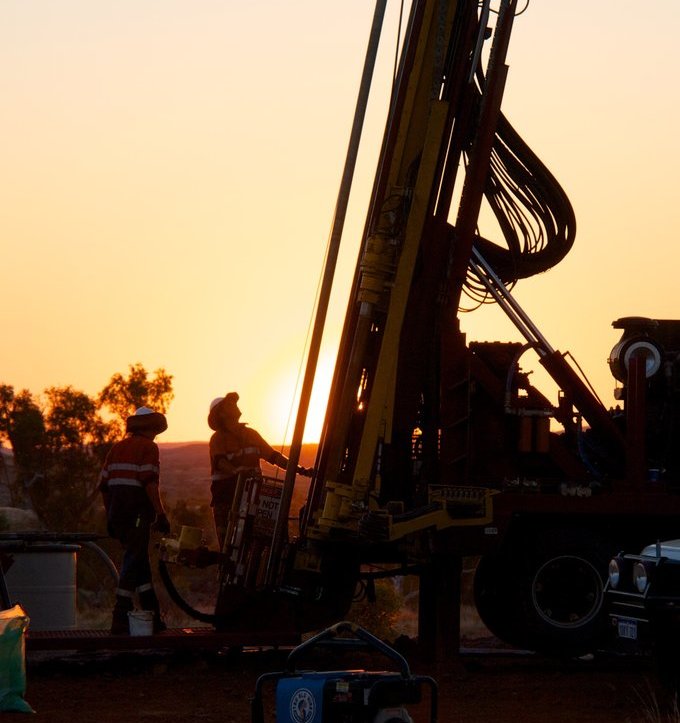
Drilling the cleanest Archean rocks. Night shifts (above) were partially necessary to compensate for the slow penetration that occurred as a consequence of abstaining from synthetic lubricants. Fresh core samples (below) intended for biomarker analyses were immediately sealed under Argon and frozen.
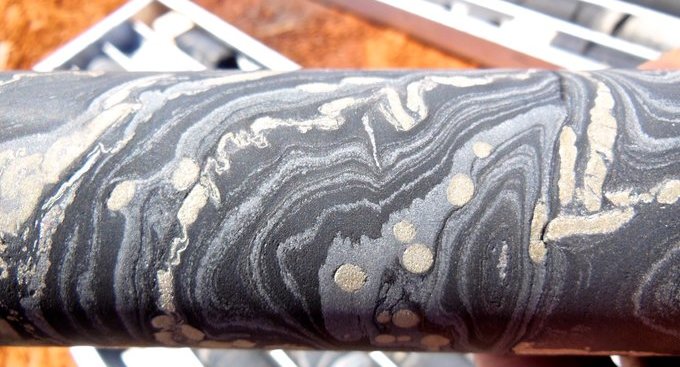
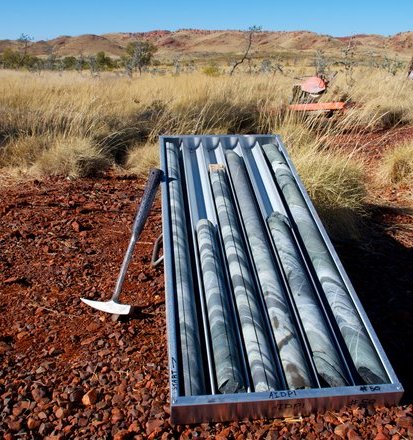
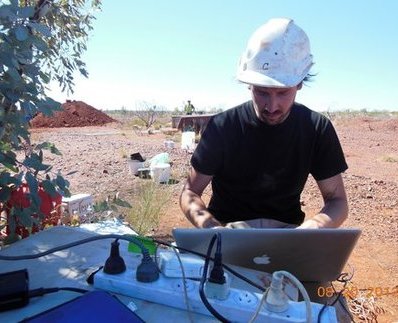
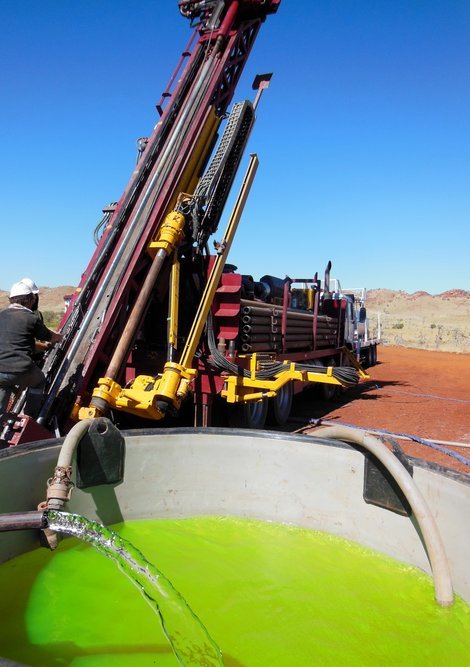
Drilling with Mountain Dew? We used only clean water, spiked with isotopically labeled hydrocarbons and a fluorescent dye, as a drilling fluid. This helped identifying the penetration depth of potential contaminants into samples.

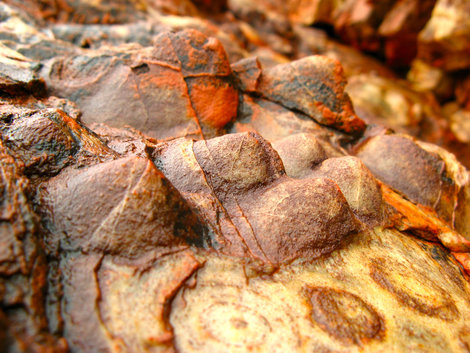
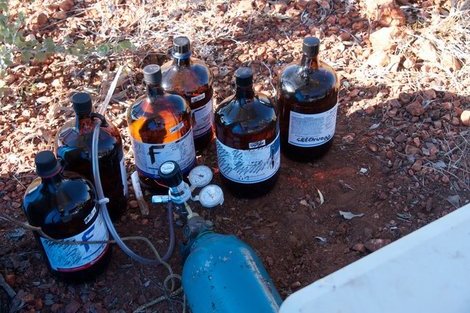
Archean stromatolites, such as these conical examples from the Trendall locality (left) represent some of the earliest evidence for life on Earth. The AIDP-2012 field team (below): Christian Hallmann, Katherine French, Roger Buick and Les Bonzer.
